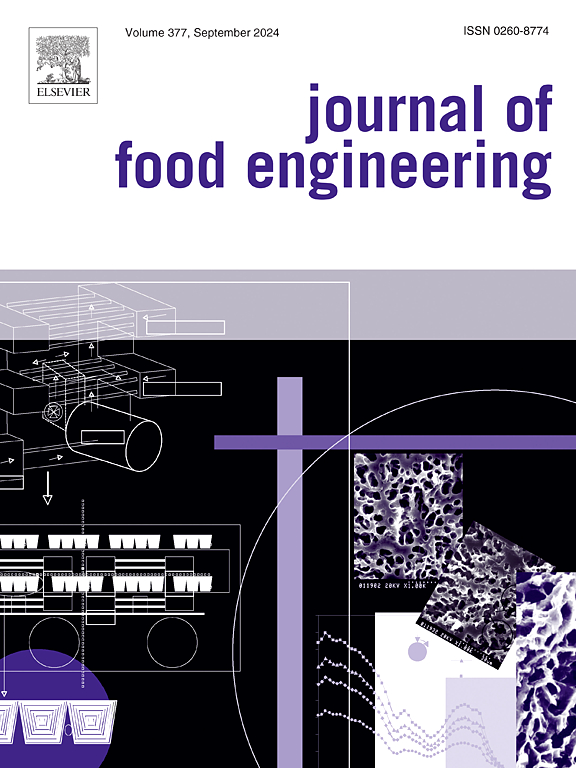一种新的鱼糜食品3D打印可打印性定量分析方法
IF 5.8
2区 农林科学
Q1 ENGINEERING, CHEMICAL
引用次数: 0
摘要
3D食品打印(3DFP)的成功在很大程度上依赖于材料的可打印性,即平滑挤压和结构稳定性。然而,许多食品材料努力满足这些标准,导致在塑造和印刷精度方面的挑战。传统的评估方法用于评估关键的印刷性指标,如持水能力(WHC)和凝胶强度,通常是昂贵的,需要专门的设备,并且是破坏性的。为了克服这些限制,本研究提出了一种非破坏性的、基于计算机视觉的方法,用于使用数字图像进行可印刷性评估。对灰度图像进行分析,基于灰度共生矩阵(GLCM)提取纹理特征。这些纹理特征,连同浓度数据,然后作为随机森林模型的输入。开发了三种不同的模型:俯视图(top),侧视图(side)和组合视图(TS)。TOP模型对WHC的预测效果最好(MAE = 0.674, R2 = 0.875, RMSE = 0.831),而TS模型对凝胶强度的预测效果最好(MAE = 0.391, R2 = 0.691, RMSE = 0.556)。这种新颖的方法能够实现快速、自动化和经济高效的评估,从而极大地帮助了3DFP优化和定制食品的开发。本文章由计算机程序翻译,如有差异,请以英文原文为准。
A novel quantitative analysis method for printability in 3D food printing for surimi
The success of 3D food printing (3DFP) relies heavily on material printability, defined by smooth extrusion and structural stability. However, many food materials struggle to meet these criteria, leading to challenges in shaping and printing precision. Conventional evaluation methods for evaluating key printability indicators like water holding capacity (WHC) and gel strength are often costly, require specialized equipment, and are destructive. To overcome these limitations, this study proposes a non-destructive, computer vision-based approach for printability evaluation using digital images. Grayscale images were analyzed to extract texture features based on the gray-level co-occurrence matrix (GLCM). These texture features, along with additive concentration data, then served as input for a Random Forest model. Three distinct models were developed: top view (TOP), side view (SIDE), and combined view (TS). The TOP model demonstrated the highest predictive performance for WHC (MAE = 0.674, R2 = 0.875, RMSE = 0.831), while the TS model showed superior accuracy for gel strength (MAE = 0.391, R2 = 0.691, RMSE = 0.556). This novel approach enables rapid, automated, and cost-effective assessments, thereby significantly aiding in 3DFP optimization and the development of customized food products.
求助全文
通过发布文献求助,成功后即可免费获取论文全文。
去求助
来源期刊

Journal of Food Engineering
工程技术-工程:化工
CiteScore
11.80
自引率
5.50%
发文量
275
审稿时长
24 days
期刊介绍:
The journal publishes original research and review papers on any subject at the interface between food and engineering, particularly those of relevance to industry, including:
Engineering properties of foods, food physics and physical chemistry; processing, measurement, control, packaging, storage and distribution; engineering aspects of the design and production of novel foods and of food service and catering; design and operation of food processes, plant and equipment; economics of food engineering, including the economics of alternative processes.
Accounts of food engineering achievements are of particular value.
 求助内容:
求助内容: 应助结果提醒方式:
应助结果提醒方式:


